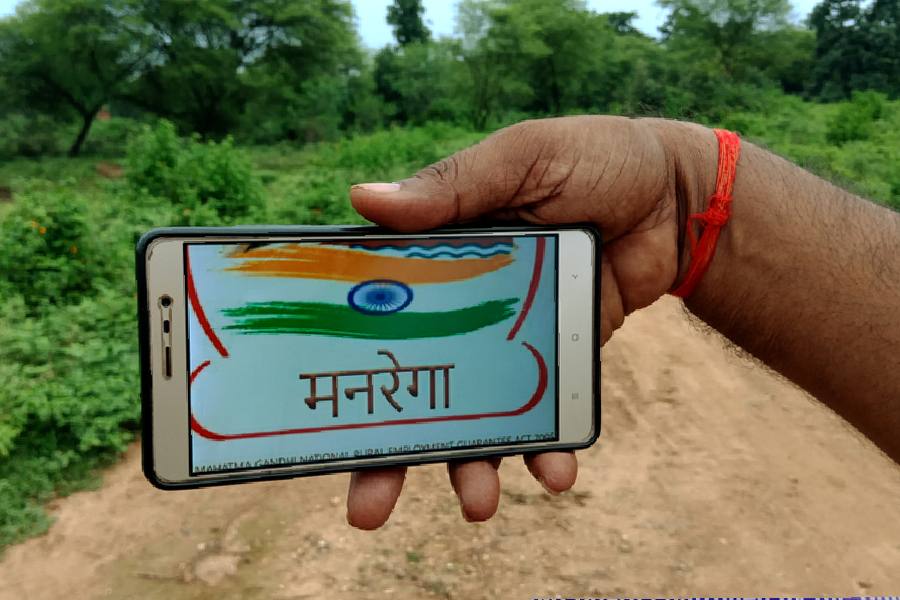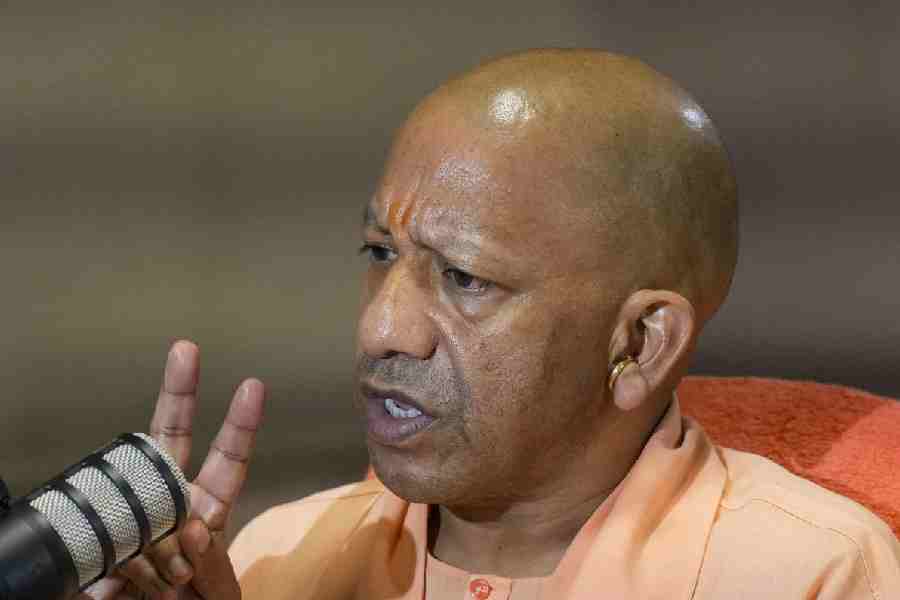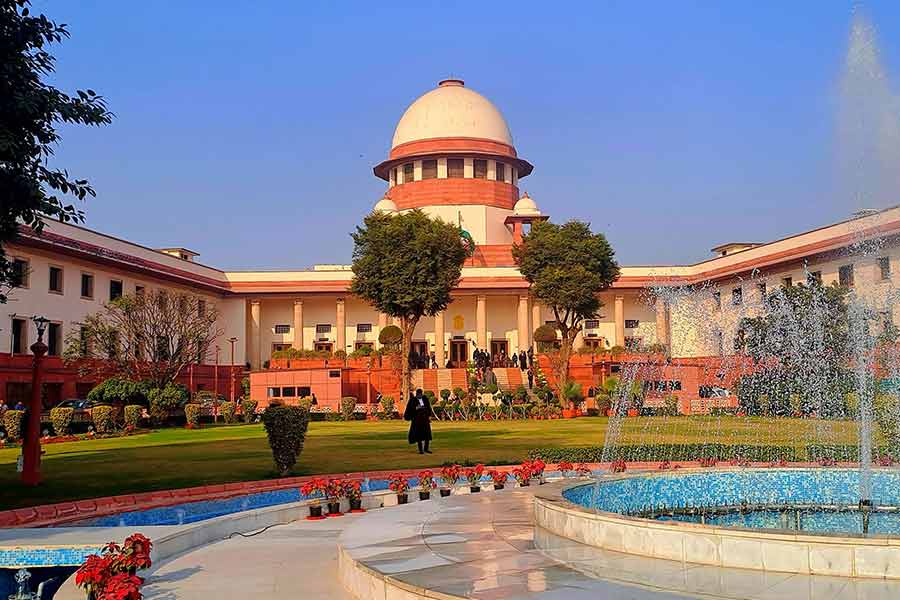 |
| Saoli Mitra in Nathabati Anathabat. A Telegraph picture |
That was another Sunday 25 years ago at the Academy of Fine Arts when Nathabati Anathabat had taken Calcutta by storm.
Last Sunday, December 14, Saoli Mitra was back before a packed auditorium in which were many who had come to see the play for the third or fourth time.
Some may have felt a little dissatisfied — but that may have had less to do with sagging technique than with the audience’s greater exposure to similar presentations and an immunity from shock.
But it was still heartening to see Saoli in a yellow red-bordered sari playing both kathak (narrator) and actor. The cynical, emotional and outspoken kathak describes and critiques the scenes of Draupadi’s life from the Mahabharata.
Draupadi is being stripped as voices of Karna, Duryodhana, Duhshasana and Shakuni soar in disconcerting peals of laughter, but no Krishna steps in, as he does in the most popular versions of the Mahabharata.
Suddenly the sufferings of Draupadi rise beyond the limitations of gender, place and time to represent the sufferings of all the exploited whom the “guni jon” (the respected ones) present in the court — and the auditorium — make no effort to save.
But Draupadi is not the quiet victim. Bewildered and terrified, she can still tell the court that as slaves who had themselves been pawned away, the Pandavas had no right to pawn her.
When Nathabati was written and staged in 1983, there already were several interpretations of the Mahabharata in the 70s by Manoj Mitra and Buddhadeva Bose, but here we had a woman taking centrestage, playing male and female roles with gusto.
Even as a solo it was something new. In the 70s there was Badal Sircar’s solo Prastab at the Academy of Fine Arts hall. Here Sircar, spread-eagled on the floor, with his hands and legs tied, held the audience spellbound for nearly an hour. And there was Tripti Mitra’s solo Aparajita that also presented the woman’s point of view, but which, according to scholar Shamik Bandyopadhyay “extended almost too long, requiring her to display all her showmanship to hold the audience’s attention”. “At the time Nathabati first appeared it was very original, the story was known to everyone, yet the text struck a fresh note,” he said.
Sambhu Mitra, Saoli’s father, gifted her Irawati Karve’s book Yuganta. Inspired by Karve, Saoli wanted to enact “Draupadi’s tale and gauge the era through her smallest likes and dislikes”.
“To me Draupadi is a class apart — which makes her pain and humiliation all the more shocking. How can a princess with five heroes for husbands be so vulnerable!” says Saoli.
Draupadi’s passion for Arjuna that he doesn’t value and Bheema’s deep caring that Draupadi recognises too late are also points of interest.
“Nathabati Anathabat voiced very strongly the problems of all women through Draupadi. The fact that it has not ceased to be relevant shows that in all these 25 years we have done nothing to alter social conditions,” says Pratibha Agarwal, scholar, translator and the director of theatre research centre Natyasodh.










